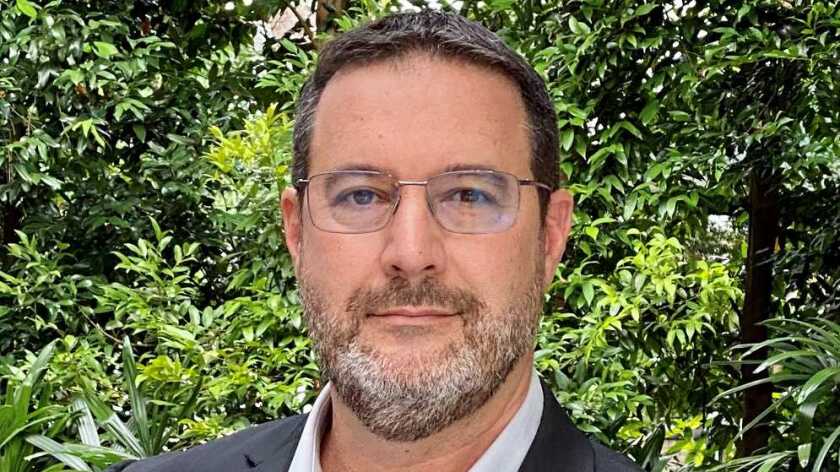Meet Hawaiki Nui. The latest subsea cable system in Asia-Pacific and sister cable to the original Hawaiki subsea cable that went live in 2018.
The 22,000km Hawaiki Nui system is being hailed as the first and largest spatial division multiplexing (SDM) cable linking south east Asia, Australasia and North America.
Rémi Galasso, entrepreneur and executive chairman of Hawaiki Cable, says the motivation for building the new cable is all down to traffic.
“Traffic is booming! It is booming in Singapore, in Indonesia, in Australia – even in New Zealand. So, there is a need for a new subsea cable system and there’s no SDM cable connecting Australia and New Zealand to the US at the moment.”
According to Galasso, annual demand growth has been continuously greater than 35%; and to ensure reliable and secure connectivity, diversity is key.
Hawaiki Nui will connect three key regional hubs (Sydney, Singapore and Los Angeles) via a single system and will deliver both international and domestic connectivity in Australia, New Zealand and Indonesia.
It was only in February of 2021 that we heard from Galasso about the DataGrid project that will see the development a new $500 million hyperscale data centre in Invercargill, South Island, New Zealand.
Hawaiki Nui forms part of this wider development plan, with a landing in Invercargill. “Our plan is to combine those two digital infrastructures and develop the data centre in Invercargill,” Galasso says. Thanks to Hawaiki Nui, the latency from Datagrid Invercargill to both Sydney and Melbourne will be under 25 milliseconds.”
Unlike other cables in the region, Hawaiki Nui will have minimum of 16 fibre pairs. It is designed to serve the cloud and content providers who are driving the demand for this level of capacity.
“They used to ask for 100G and then 1Tb and now they are asking for multiple fibre pairs,” Galasso says.
OTTs and content providers aside, Hawaiki Nui will operate in the same way as the Hawaiki cable, meaning a private but carrier-neutral cable system available to all.
The benefit of leveraging SDM technology for the system – aside from the massive increase in capacity – is the freedom it will give its customers.
“Using SDM, some of our customers can have their own fibre pairs and their own SLTE [submarine line terminal equipment] – and the independence to manage the traffic,” explains Galasso.
At the same time, the transmission equipment will be 800G-capable and the actual transmission rate will be adjusted in accordance with the length of each specific link in the network, with shorter links at higher capacities than longer ones.
Looking at the cable map of the two systems side by side, it appears that Hawaiki and Hawaiki Nui interconnect at particular segments of the route. Galasso explains that on the Australia to US segment, the two cables are divergent, with Hawaiki landing in Oregon Hawaiki Nui landing California.
“But we are going to interconnect the two in Hawaii. Hawaiki lands in Oahu and Hawaiki Nui lands in Big Island. So, we create a loop from Oregon to Hawaii to California that is a perfect figure of eight around these islands.”
These partially connected cables will also enable the company to customise capacity offers by combining the two routes, in order to respond to specific requirements such as low latency.
At the time of the announcement, it was confirmed that Indonesian telco Moratelindo will act as the Indonesian landing party and will acquire all the permits and approvals in Indonesia for the Hawaiki Nui project. It will also help define the subsea route and landings in Indonesia and provision local terrestrial infrastructure for landing the cable.
Galasso says there are two main reasons for the collaboration.
First, Moratelindo owns more than 48,000km of subsea and terrestrial fibre network.
“They connect the whole of Indonesia. So, it’s important for our customers to be able to reach the data centres. Moratelindo already owns six data centres in country.”
Second, Galasso says, the collaboration will enable Hawaiki Cable to provide turnkey solutions to the company’s big customers that require international subsea cable and domestic backhaul connectivity.
Also, as a carrier-neutral provider, Galasso says “they share the same DNA and philosophy”.
The contract to build the Hawaiki Nui system is out to tender and due for announcement in the first quarter of 2022. Supplier contracts for the project are then expected to come into force by June 2022.
This will be closely followed by the marine survey. Subject to the necessary permissions, Galasso hopes to have the Australia to New Zealand leg up and running by 2024.
The second phase will focus on the Australia to USA segment, followed by the Darwin to Singapore leg, with full build by 2025.






